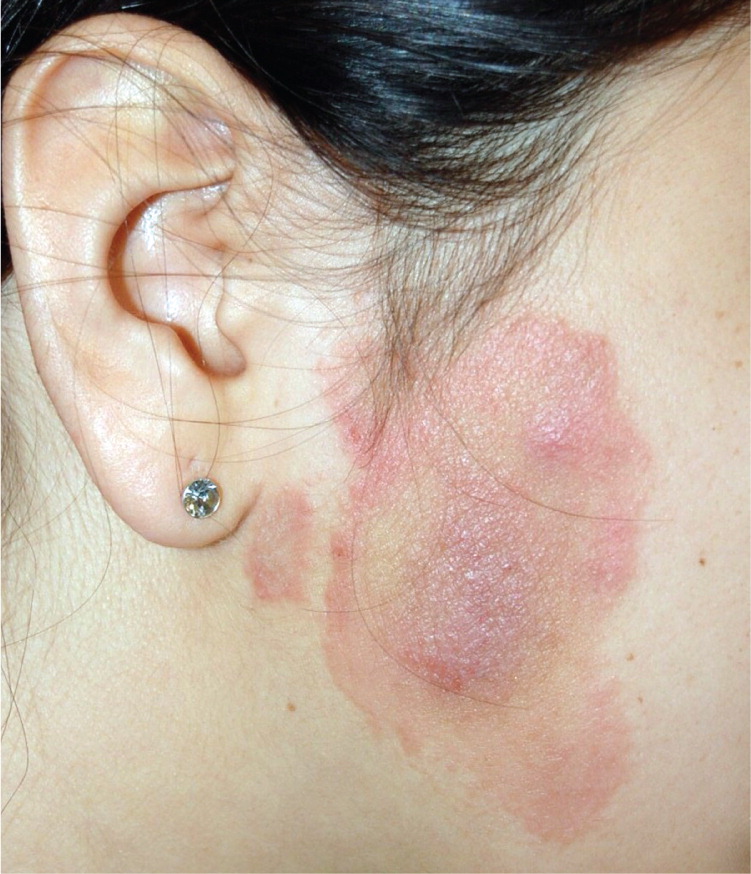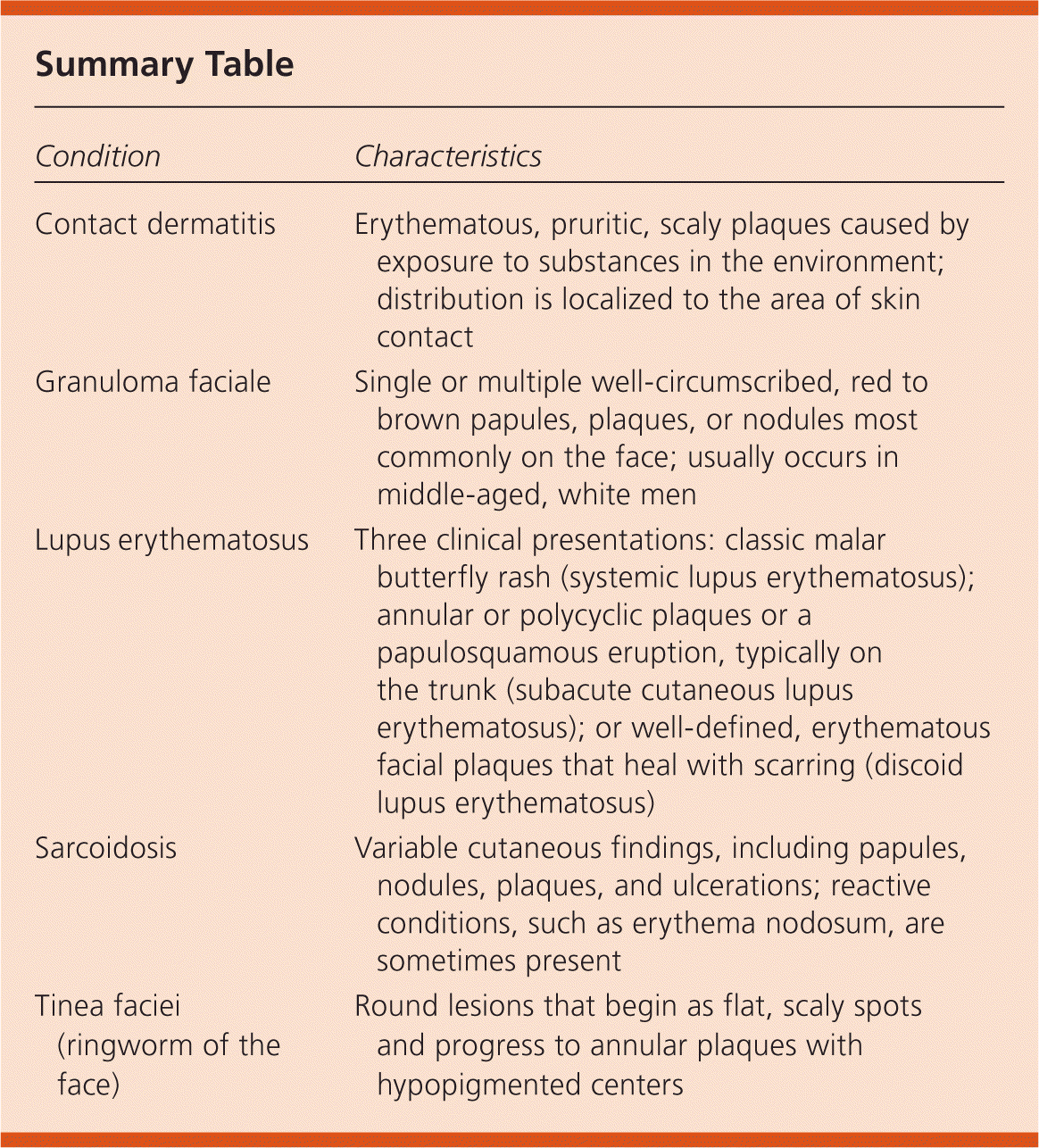
Am Fam Physician. 2011;83(11):1337-1338
Author disclosure: Nothing to disclose.
The opinions and assertions contained herein are the private views of the authors and are not to be construed as official or as reflecting the views of the U.S. Navy Medical Department or the U.S. Navy at large.
A healthy 18-year-old woman presented with a pruritic rash on the right lateral aspect of her face that had appeared one year earlier. The patient was previously treated with topical steroids and clotrimazole, with minimal improvement of her symptoms. On physical examination, there was a well-defined, erythematous, eczematous plaque on the right preauricular cheek (see accompanying figure).

Question
Discussion
The correct answer is A: contact dermatitis. Contact dermatitis from exposure to a substance in the environment leads to erythematous, pruritic, scaly plaques that are localized to the area of skin contact. Allergic contact dermatitis to nickel has increased significantly over the past two decades, with most cases involving adolescents and women.1 Nickel is a common allergen that is present in a wide range of everyday objects, such as zippers, keys, metal jewelry, belt buckles, and cellular phones. The patient used her cellular phone for one to two hours per day, predominantly on the right ear.
Allergic contact dermatitis from cellular phone use typically manifests as a unilateral facial eruption that primarily affects the lateral cheek and ear, specifically the preauricular region. The clinical presentation of allergic contact dermatitis from nickel can vary depending on perspiration, friction, pressure, and the amount of nickel released.2 Cellular phones with fashion designs and accents are more likely to contain nickel. Nickel can be found in the buttons, the decorative logos on headsets, and the metallic frames around the display.3 Persons prone to contact dermatitis from nickel can use a commercially available nickel test kit containing dimethylglyoxime to choose their cellular phones. Chromate, which can be found in stainless steel, may also cause contact dermatitis from cellular phone use.4
Granuloma faciale is an uncommon, chronic, benign skin disease that primarily affects middle-aged, white men. It is characterized by single or multiple well-circumscribed, red to brown papules, plaques, or nodules most commonly affecting the face. The scalp, trunk, and upper extremities may also be affected, although this is less common.
Lupus erythematosus is a multisystem disease characterized by the production of numerous types of autoantibodies. It can be divided into three main clinical subtypes based on dermatologic findings: systemic, subacute cutaneous, and discoid. Patients with systemic lupus erythematosus may develop a classic malar butterfly rash. Subacute cutaneous lupus erythematosus can present as annular or polycyclic plaques or a papulosquamous eruption, most often on the trunk. Discoid lupus erythematosus may present as well-defined, erythematous facial plaques that often heal with scarring.
Sarcoidosis is a chronic, multisystem granulomatous disease that can involve many internal organ systems. The etiology of the disease is unknown and cutaneous findings are variable, including papules, nodules, plaques, and ulcerations. Lesions can be red, brown, violaceous, or even yellow in appearance. Reactive dermatologic conditions, such as erythema nodosum, may also be present.
Tinea faciei is also known as ringworm of the face. It is a common fungal infection affecting facial skin. It is characterized by round lesions, which typically begin as flat, scaly spots that progressively spread outward. As the lesion expands, the central area often becomes hypopigmented, which gives the lesion an annular appearance.

| Condition | Characteristics |
|---|---|
| Contact dermatitis | Erythematous, pruritic, scaly plaques caused by exposure to substances in the environment; distribution is localized to the area of skin contact |
| Granuloma faciale | Single or multiple well-circumscribed, red to brown papules, plaques, or nodules most commonly on the face; usually occurs in middle-aged, white men |
| Lupus erythematosus | Three clinical presentations: classic malar butterfly rash (systemic lupus erythematosus); annular or polycyclic plaques or a papulosquamous eruption, typically on the trunk (subacute cutaneous lupus erythematosus); or well-defined, erythematous facial plaques that heal with scarring (discoid lupus erythematosus) |
| Sarcoidosis | Variable cutaneous findings, including papules, nodules, plaques, and ulcerations; reactive conditions, such as erythema nodosum, are sometimes present |
| Tinea faciei (ringworm of the face) | Round lesions that begin as flat, scaly spots and progress to annular plaques with hypopigmented centers |
